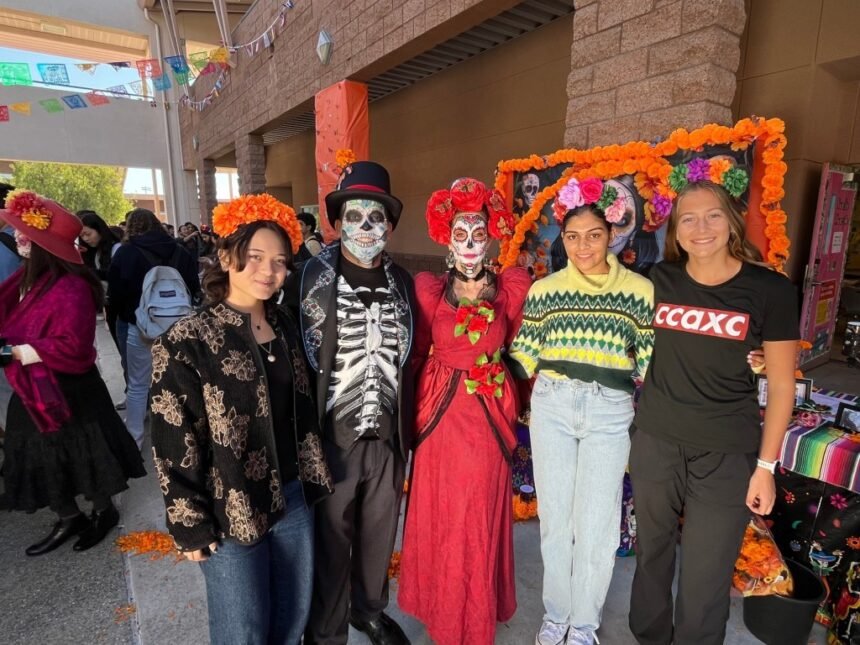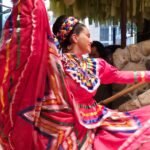Canyon Crest Academy held a vibrant and fun Día de los Muertos celebration on campus on Nov. 1, offering students a chance to learn about the significance of the holiday in Mexico and other parts of the world and promoting cultural awareness among the school’s diverse student body.
This was the second annual Día de los Muertos celebration on campus and the Spanish department, and students in the Spanish Culture Club prepped for about a month, hoping to build it into a meaningful campus tradition that grows every year.
“We wanted to make it a much bigger experience this year and have more students be a part of it,” said Spanish Culture Club member Naisha Patel. “The whole point is to celebrate and come together.”
As club member Emi Schultz said, the Mexican holiday is a beautiful tradition, honoring deceased loved ones. Working with Profe Paz and Profe Krugh (what they affectionately call Spanish teachers Rigo Paz and Laura Krough), they created a lunch period full of activities. The club members and other students wore festive flower crowns, and Profe Paz and Profe Krough were in full costume and catrina face paint. The teachers spoke to the students that day entirely en español.
Colorful papel picador was strung across the courtyard with chalk drawings and an ofrenda. The ofrenda, a large altar, was decorated with sugar skulls, candles and bright yellow marigolds around photos of lost loved ones and pets, offering a visual prayer to all those who are so missed.
A full orchestra played music from “Coco” surrounded by students on the quad and CCA’s first ever mariachi band performed with singers and musicians (even an accordion) playing “El Mariachi Loco” while the teachers led students in a traditional dance.
Parent volunteers trained art students in advance to help with catrina face painting on the big dia and students lined up in bulk to get their faces painted to look like colorful skulls. A temporary tattoo station was popular and a photo booth was set up for photo ops with decorated skeletons, signs and masks.
“The goal is to share more Hispanic culture with our school,” said Eni of the Spanish Culture Club’s efforts. ”A lot of students take Spanish…this is a way to keep being a part of the culture after they’re done taking the class.”
As Profe Paz and Profe Krough said, by involving the entire student body, they hoped to strengthen the sense of community within the school, promoting unity and shared experiences.

















